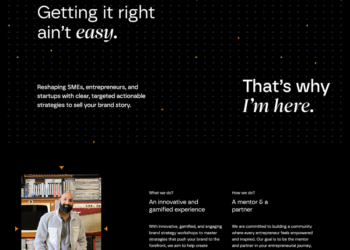One of the most significant inventions of the 21st century is the creation of decentralized applications (dApps) and smart contracts, courtesy of Ethereum. Unfortunately, greater use of Ethereum leads to problems such as network congestion and high transaction fees. To resolve these issues, Layer 2 scaling solutions like Arbitrum and Optimism offer faster and cheaper transactions. In this article, we will try to figure out the advantages and disadvantages of the two platforms so we can determine which Arbitrum or Optimism will be advantageous for you.
What is Arbitrum and Optimism Layer 2 Scaling Solutions?
The first difference to cover in the Arbitrum vs Optimism debate is what Layer 2 Solutions is. In layman’s terms, it refers to protocols designed to be superimposed on Ethereum’s base protocol (Layer 1), with the aim of increasing its capacity for processing data. Layer 2 solutions ease congestion, enhance fee efficiency, secure the mainnet, and stamp the transactions on Ethereum. One primary advantage of these platforms is that their transaction timestamps are captured on the Ethereum mainnet.
Arbitrum: Everything Important You Should Know
Using optimistic rollups, which assume but can challenge the validity of transactions, Arbitrum launched in August 2021. One of the most prominent features is the multi-round fraud-proof system, which is complex but inexpensive to resolve disputes. Moreover, Arbitrum has its own Arbitrum Virtual Machine (AVM), which is Ethereum compatible and enables developers to migrate their dApps with ease. Currently leading Layer 2 solutions in total value locked (TVL) and transaction volume, as of 2025, Arbitrum has a strong and active user base.
Beyond optimizing Ethereum Layer 2 solutions, zkSync Era RPC provides other alternatives. Adjusting the RPC configurations allows for seamless integration of the zkSync Era into your wallet.
Initiation of Optimism As A Case Study
In December 2021, Optimism emerged using optimistic rollups to further enhance Ethereum’s scalability. It was designed with simplicity in mind, ensuring close resemblance with the Ethereum Virtual Machine (EVM), meaning developers could easily transfer their existing dApps on Ethereum to Optimism with minimal modifications. Because of this simplicity, many projects started moving towards Optimism for greater scalability without extensive coding changes. By the start of 2025, Optimism was the eighth largest blockchain by total value locked (TVL), showcasing its dominance in the Layer 2 ecosystem.
Liquid RON is also a new development in the Ethereum ecosystem which improves DeFi efficacy with the use of ERC-4626 vaults and rewards auto staking.
Difference Between Arbitrum and Optimism
Although the two platforms have the same purpose of scaling Ethereum, they have many differences.
-
Fraud-Proof Mechanisms: Optimism operates using a single round simpler system which is less costly in disputes, while Arbitrum leverages a multi-round system which can lead to lower overall costs but higher complexity during disputes.
-
Virtual Machine Compatibility: With the inclusion of Parallel processing ArbOS, Arbritrum’s AVM has the potential for increased throttle and decreased costs, both of which provide advantages. For ease of movement for Ethereum developers, Optimism’s OVM is a direct copy of EVM.
-
Developer Experience: Unlike Arbitrum, which has a unique design that may be more difficult for some developers to pick up, Optimism’s Ethereum developer experience is easier thanks to its EVM alignment.
Performance Metrics
Analyzing performance remains one of the most important aspects of considering Layer 2 solutions.
-
Transaction Throughput: Optimism lags in comparison to Arbitrum due to Arbitrum’s theoretical TPS being severely higher.
-
Block Time: With Arbitrum optimizing for shorter block time relative to Optimism, transactions stand to be confirmed much faster.
Ecosystem Development & Community Engagement
Both frameworks have developed associated lively ecosystems and communities.
-
Arbitrum: Positioning itself as a frontrunner due to having higher TVL and transactional volume, Arbitrum is saturated with users making it easier for projects with wider targeting to thrive.
-
Optimism: While having lesser share, the active and strong community drives engagement, making it easier for projects focusing on user engagement to build.
Moreover, expanding the horizon of blockchain technology, Plume Blockchain is actively working towards putting real world assets on-chain.
Which Suits You The Most?
The decision comes around considering the specifics of the project you’re working with.
Choose Arbitrum if:
Select Optimism if:
-
You want to have low-hanging fruit when it comes to development and require a solution that complements Ethereum’s infrastructure.
-
Your project focuses on easy transaction flow and uncomplicated resolution of conflicts.
Conclusion
Both Arbitrum and Optimism offer unique approaches to solving Ethereum’s scalability problem, optimally based on distinct advantages and disadvantages. Understanding their differences in fraud-proof systems, developer engagement, community participation, and overall experience enables a better decision aligned with project objectives. With the continuous growth of the Ethereum ecosystem, these Layer 2 solutions help expose the value of decentralized applications which serves as a focal point for developers.
One of the most significant inventions of the 21st century is the creation of decentralized applications (dApps) and smart contracts, courtesy of Ethereum. Unfortunately, greater use of Ethereum leads to problems such as network congestion and high transaction fees. To resolve these issues, Layer 2 scaling solutions like Arbitrum and Optimism offer faster and cheaper transactions. In this article, we will try to figure out the advantages and disadvantages of the two platforms so we can determine which Arbitrum or Optimism will be advantageous for you.
What is Arbitrum and Optimism Layer 2 Scaling Solutions?
The first difference to cover in the Arbitrum vs Optimism debate is what Layer 2 Solutions is. In layman’s terms, it refers to protocols designed to be superimposed on Ethereum’s base protocol (Layer 1), with the aim of increasing its capacity for processing data. Layer 2 solutions ease congestion, enhance fee efficiency, secure the mainnet, and stamp the transactions on Ethereum. One primary advantage of these platforms is that their transaction timestamps are captured on the Ethereum mainnet.
Arbitrum: Everything Important You Should Know
Using optimistic rollups, which assume but can challenge the validity of transactions, Arbitrum launched in August 2021. One of the most prominent features is the multi-round fraud-proof system, which is complex but inexpensive to resolve disputes. Moreover, Arbitrum has its own Arbitrum Virtual Machine (AVM), which is Ethereum compatible and enables developers to migrate their dApps with ease. Currently leading Layer 2 solutions in total value locked (TVL) and transaction volume, as of 2025, Arbitrum has a strong and active user base.
Beyond optimizing Ethereum Layer 2 solutions, zkSync Era RPC provides other alternatives. Adjusting the RPC configurations allows for seamless integration of the zkSync Era into your wallet.
Initiation of Optimism As A Case Study
In December 2021, Optimism emerged using optimistic rollups to further enhance Ethereum’s scalability. It was designed with simplicity in mind, ensuring close resemblance with the Ethereum Virtual Machine (EVM), meaning developers could easily transfer their existing dApps on Ethereum to Optimism with minimal modifications. Because of this simplicity, many projects started moving towards Optimism for greater scalability without extensive coding changes. By the start of 2025, Optimism was the eighth largest blockchain by total value locked (TVL), showcasing its dominance in the Layer 2 ecosystem.
Liquid RON is also a new development in the Ethereum ecosystem which improves DeFi efficacy with the use of ERC-4626 vaults and rewards auto staking.
Difference Between Arbitrum and Optimism
Although the two platforms have the same purpose of scaling Ethereum, they have many differences.
-
Fraud-Proof Mechanisms: Optimism operates using a single round simpler system which is less costly in disputes, while Arbitrum leverages a multi-round system which can lead to lower overall costs but higher complexity during disputes.
-
Virtual Machine Compatibility: With the inclusion of Parallel processing ArbOS, Arbritrum’s AVM has the potential for increased throttle and decreased costs, both of which provide advantages. For ease of movement for Ethereum developers, Optimism’s OVM is a direct copy of EVM.
-
Developer Experience: Unlike Arbitrum, which has a unique design that may be more difficult for some developers to pick up, Optimism’s Ethereum developer experience is easier thanks to its EVM alignment.
Performance Metrics
Analyzing performance remains one of the most important aspects of considering Layer 2 solutions.
-
Transaction Throughput: Optimism lags in comparison to Arbitrum due to Arbitrum’s theoretical TPS being severely higher.
-
Block Time: With Arbitrum optimizing for shorter block time relative to Optimism, transactions stand to be confirmed much faster.
Ecosystem Development & Community Engagement
Both frameworks have developed associated lively ecosystems and communities.
-
Arbitrum: Positioning itself as a frontrunner due to having higher TVL and transactional volume, Arbitrum is saturated with users making it easier for projects with wider targeting to thrive.
-
Optimism: While having lesser share, the active and strong community drives engagement, making it easier for projects focusing on user engagement to build.
Moreover, expanding the horizon of blockchain technology, Plume Blockchain is actively working towards putting real world assets on-chain.
Which Suits You The Most?
The decision comes around considering the specifics of the project you’re working with.
Choose Arbitrum if:
Select Optimism if:
-
You want to have low-hanging fruit when it comes to development and require a solution that complements Ethereum’s infrastructure.
-
Your project focuses on easy transaction flow and uncomplicated resolution of conflicts.
Conclusion
Both Arbitrum and Optimism offer unique approaches to solving Ethereum’s scalability problem, optimally based on distinct advantages and disadvantages. Understanding their differences in fraud-proof systems, developer engagement, community participation, and overall experience enables a better decision aligned with project objectives. With the continuous growth of the Ethereum ecosystem, these Layer 2 solutions help expose the value of decentralized applications which serves as a focal point for developers.





















































































where to buy cheap clomiphene clomid tablets for sale clomid chart buy generic clomiphene without prescription cost cheap clomiphene without a prescription can i buy generic clomid price clomid buy
This is the type of advise I turn up helpful.
https://548qaz.com
More peace pieces like this would insinuate the интернет better.
azithromycin pills – buy ciprofloxacin 500mg order flagyl 200mg
motilium ca – how to buy domperidone cyclobenzaprine order
purchase inderal online cheap – inderal for sale oral methotrexate 5mg
cheap amoxicillin generic – amoxil for sale online oral combivent 100mcg
amoxiclav order – https://atbioinfo.com/ buy acillin online
purchase nexium generic – anexamate.com buy esomeprazole 40mg online
warfarin online – https://coumamide.com/ buy losartan 50mg without prescription
order mobic 7.5mg without prescription – https://moboxsin.com/ purchase meloxicam generic
order prednisone 20mg generic – asthma buy deltasone 10mg generic
erection pills that work – buy ed pills online buy ed pills without a prescription
buy amoxicillin paypal – comba moxi amoxicillin drug
purchase fluconazole sale – https://gpdifluca.com/# fluconazole generic
buy escitalopram 10mg generic – https://escitapro.com/# buy escitalopram 20mg generic
buy cenforce cheap – cenforce 100mg uk cenforce price
tadalafil without a doctor prescription – click cialis canada
buy zantac 150mg for sale – https://aranitidine.com/# buy zantac medication
herbal viagra sale uk – https://strongvpls.com/# order cheap generic viagra
With thanks. Loads of conception! this
With thanks. Loads of expertise! buy generic lasix
Greetings! Utter useful par‘nesis within this article! It’s the scarcely changes which choice turn the largest changes. Thanks a a quantity in the direction of sharing! ventolin inhalator order
This is the compassionate of scribble literary works I truly appreciate. https://prohnrg.com/product/acyclovir-pills/
Thanks on sharing. It’s top quality. propecia effets secondaires long terme
More content pieces like this would make the интернет better. https://ondactone.com/product/domperidone/
This is a keynote which is in to my callousness… Numberless thanks! Faithfully where can I notice the connection details due to the fact that questions?
purchase flomax generic
Thanks on sharing. It’s first quality. http://zqykj.com/bbs/home.php?mod=space&uid=302441
buy generic forxiga over the counter – purchase dapagliflozin for sale buy dapagliflozin 10 mg for sale
orlistat online – buy xenical without a prescription orlistat 120mg canada
The depth in this piece is exceptional. http://seafishzone.com/home.php?mod=space&uid=2331327